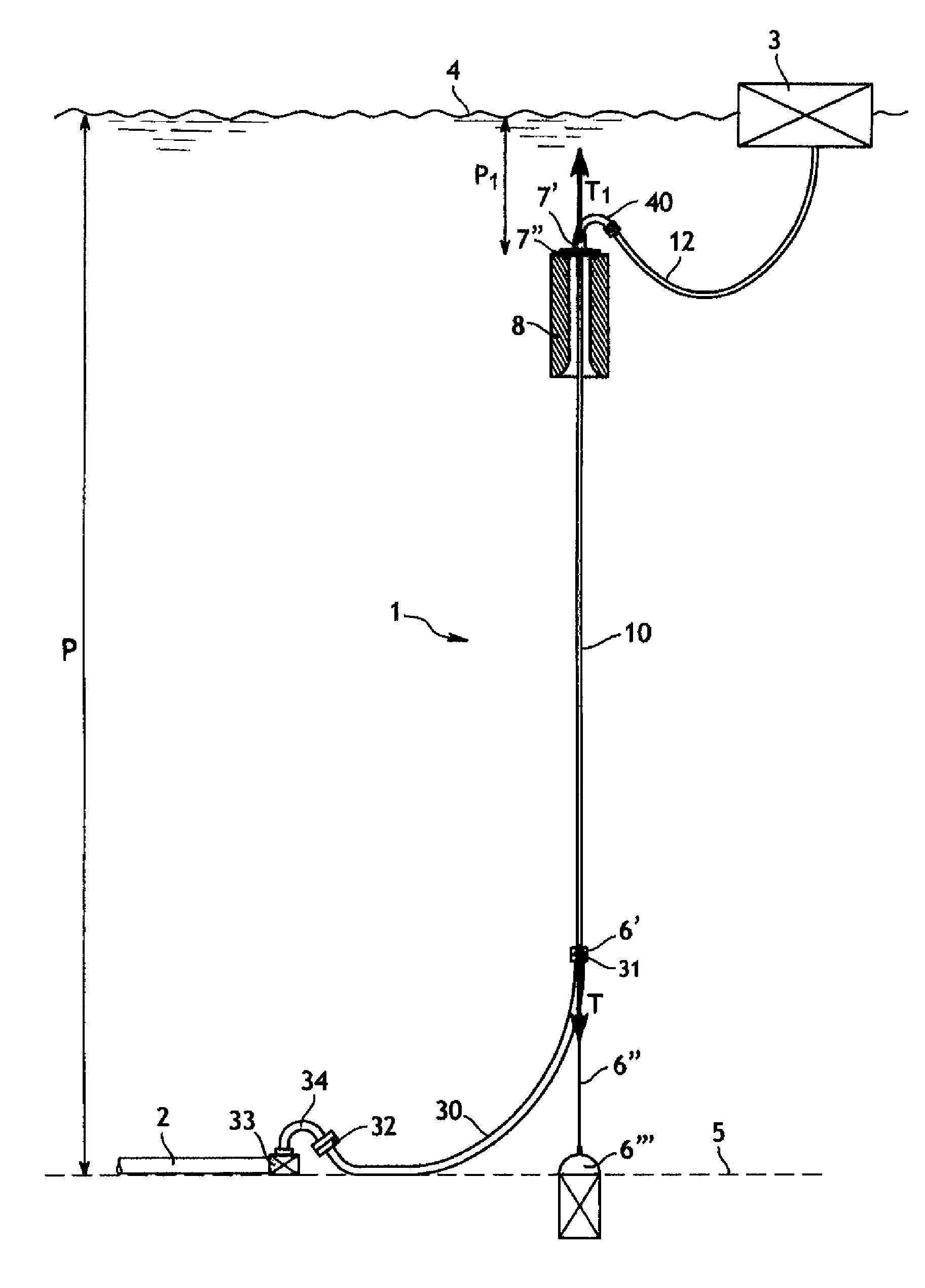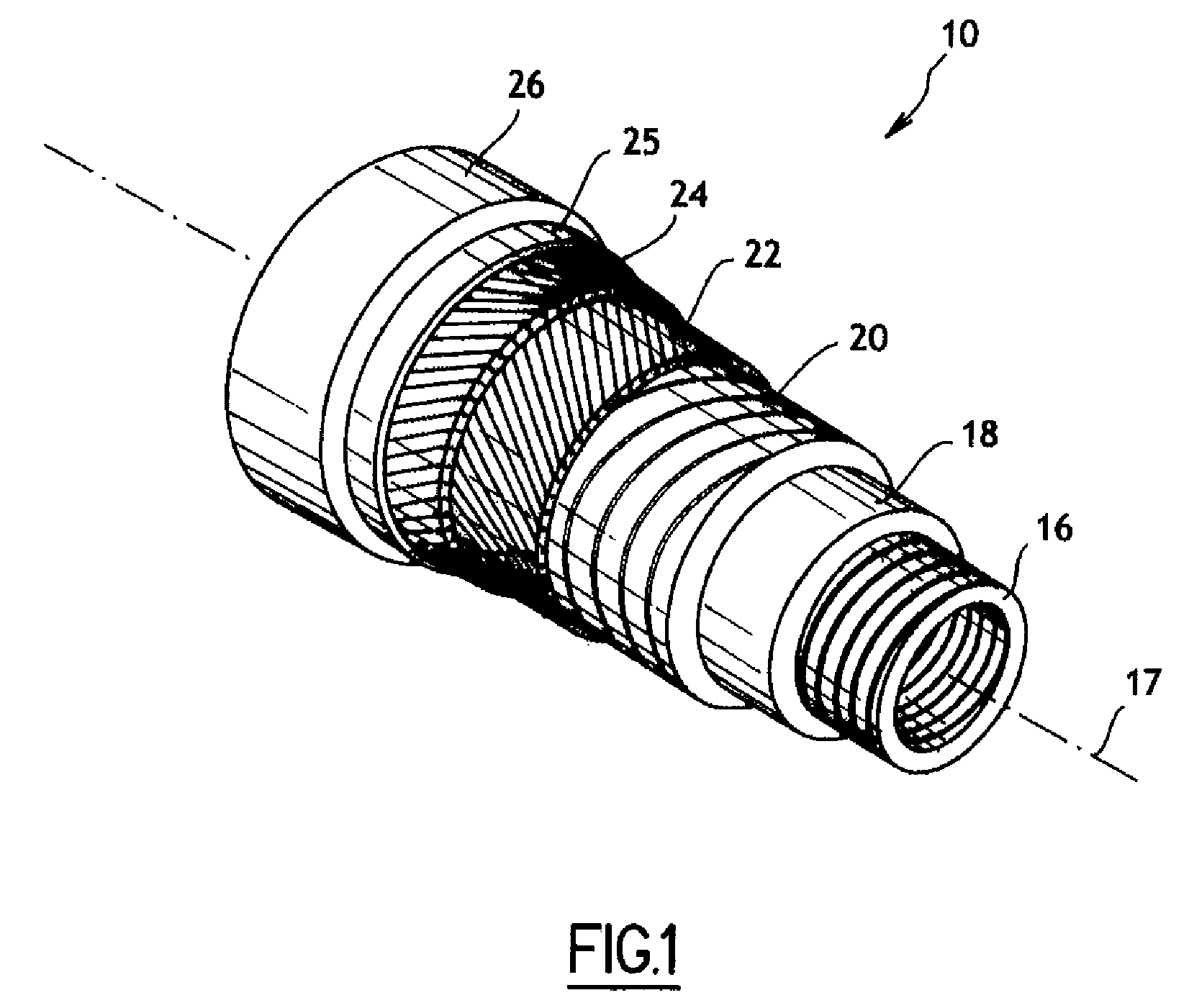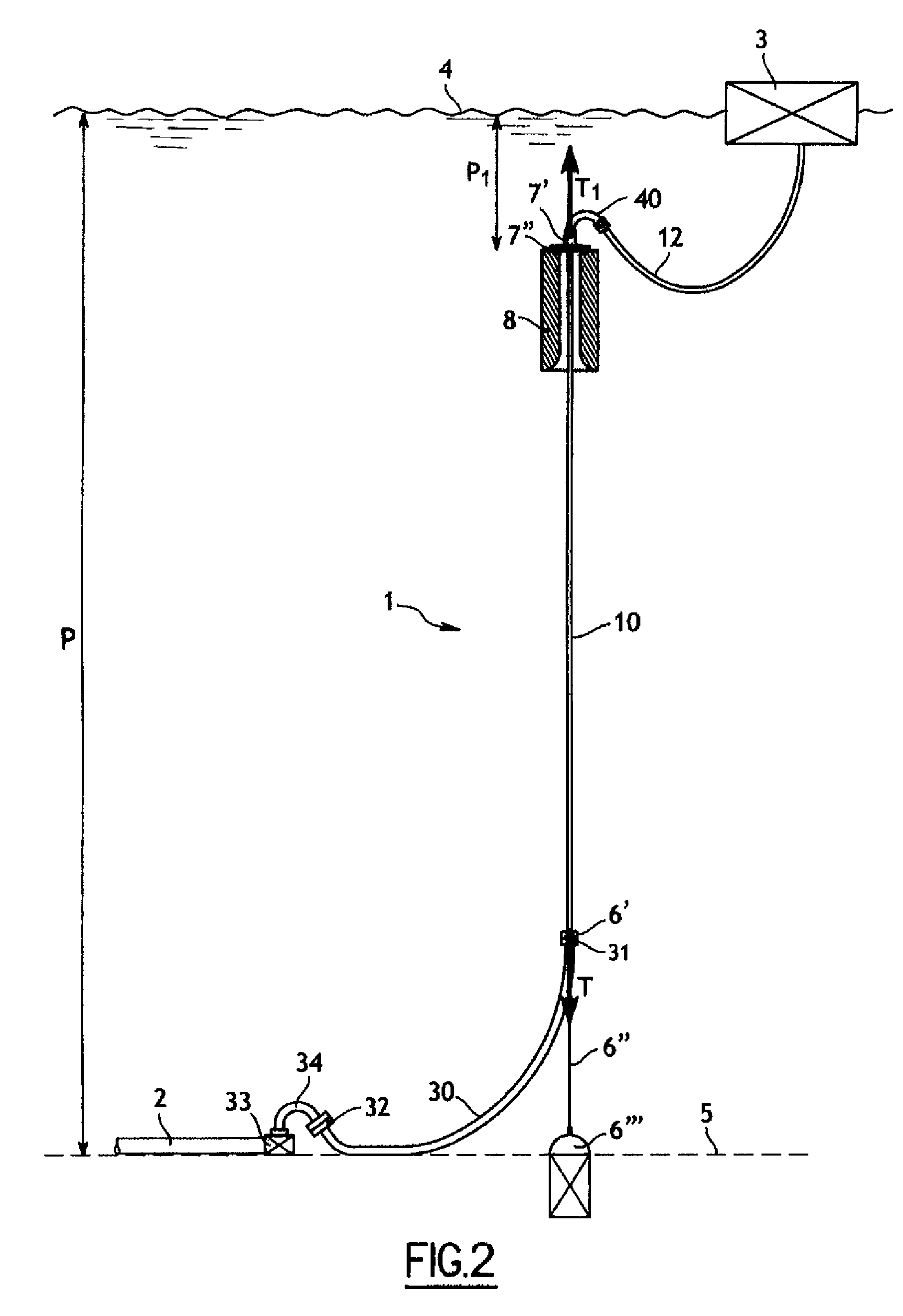Flexible riser pipe installation for conveying hydrocarbons
- Summary
- Abstract
- Description
- Claims
- Application Information
AI Technical Summary
Benefits of technology
Problems solved by technology
Method used
Image
Examples
first embodiment
[0077]According to the invention, the tension T at the foot of the riser is equal to 50% of F, that is to say to 88 000 daN. The flexible pipe 10 in this case has to be engineered to withstand an axial compressive force of the order of 90 000 daN rather than the aforementioned 180 000 daN according to the prior art. This substantial reduction in axial compression makes it possible in this example to choose a structure comprising two tensile armor layers 22, 24 made of steel each 3 mm thick and made up of conventional wires that do not have a high width-to-thickness ratio. The thickness of the anti-expansion Kevlar® layer 25 in this instance is practically half that according to the aforementioned prior art. The in-water weight of such a pipe, when full of gas, is of the order of 90 daN per linear meter, that is to say appreciably lower than that of a pipe according to the aforementioned prior art. The total in-water weight of the pipe 10 is therefore around 162 000 daN. As a result,...
second embodiment
[0079]According to a particularly advantageous second embodiment of the invention, the tension T at the foot of the riser is equal to F, that is to say to 176 000 daN.
[0080]In this case, insofar as the reverse end cap effect F is completely compensated for and insofar as it is possible to avoid placing the tensile armor layers 22, 24 in compression, it is possible and advantageous to choose for these tensile armor layers wires made of a composite material, preferably based on carbon fiber. Reference may, for example, be made to document U.S. Pat. No. 6,620,471 in the name of the Assignee Company, which discloses composite tapes comprising composite fibers embedded in a thermoplastic matrix. Such reinforcing armor affords good tensile strength and leads to a lighter weight flexible pipe than metal armor. By contrast, as they have poor compressive strength, they can be used only under conditions in which the risk of being placed in compression is averted, which it is with the inventio...
PUM
 Login to View More
Login to View More Abstract
Description
Claims
Application Information
 Login to View More
Login to View More - R&D
- Intellectual Property
- Life Sciences
- Materials
- Tech Scout
- Unparalleled Data Quality
- Higher Quality Content
- 60% Fewer Hallucinations
Browse by: Latest US Patents, China's latest patents, Technical Efficacy Thesaurus, Application Domain, Technology Topic, Popular Technical Reports.
© 2025 PatSnap. All rights reserved.Legal|Privacy policy|Modern Slavery Act Transparency Statement|Sitemap|About US| Contact US: help@patsnap.com



